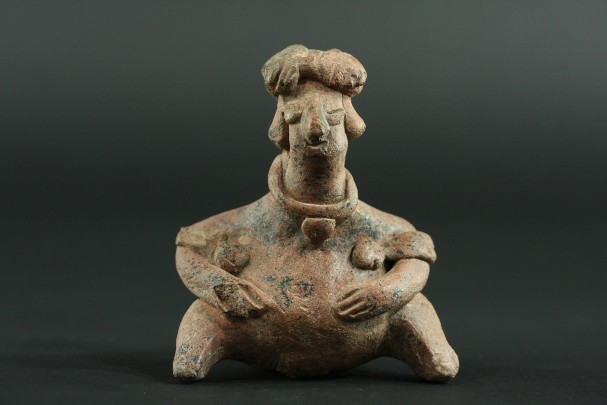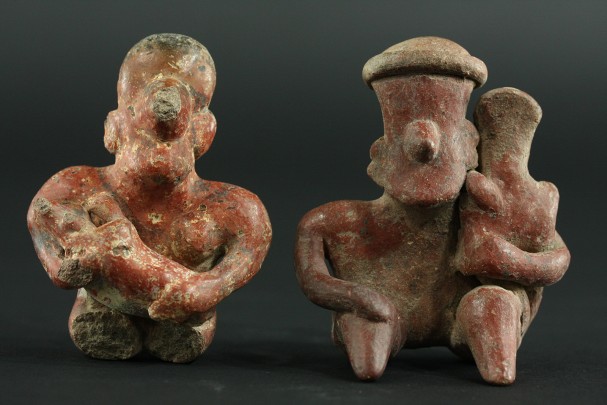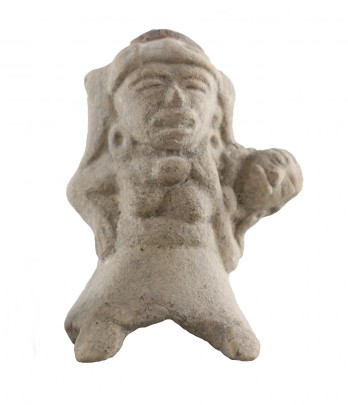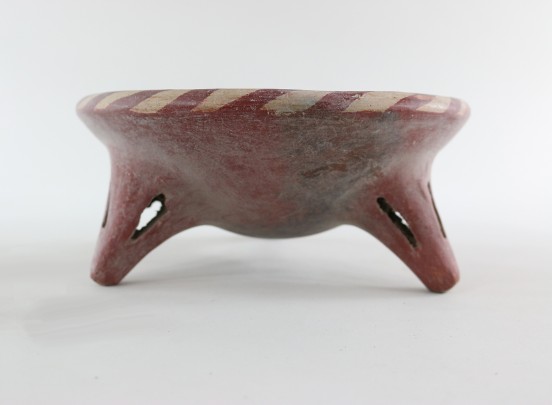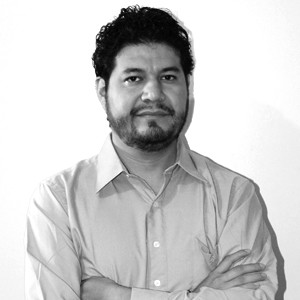The collection is named after Guillermo M. Echániz, collector, antiquarian, librarian and editor of ancient manuscripts. His Mexico City bookstore was called Librería Anticuaria México en Libros. In the 1930s and 40s, he assembled a collection of numerous archeological artefacts from different Mesoamerican regions and cultures, worthy of study for their beauty, style and historical significance. Some of these items formed part of the exhibition entitled “Mexican Masks,” organized by the Modern Art Society in 1945 and exhibited at the National Museum of Anthropology. Other pieces were put on display at the “National Exhibition of Pre-Columbian Art of Western Mexico” exhibition, held at the Palace of Fine Arts in March 1946. Guillermo M. Echániz died on November 2 , 1965, and during his life as an antiquarian and editor, his archeological collection was open to research institutes and for artistic photography.
In 1981, staff at the records department of the National Institute of Anthropology and History (INAH) began to record the archeological items in Echániz’s collection, assigning them the number 158 P.F. In 1984, Julieta Latremoville, Echániz’s widow, donated the collection to the INAH, and it was later taken to the National Museum of Anthropology’s premises in Mexico City.
In that same year, the municipal authorities of Córdoba, Veracruz, asked the INAH to loan the archeological collection for exhibition at the Museum of Córdoba, as they wanted to display the vast collection assembled by Guillermo M. Echániz, who was a native of Córdoba. Since this museum was still unprepared to receive such a large number of archeological pieces, the INAH decided to move the entire collection to the storerooms at the Fort of San Juan de Ulúa. Since then the Echániz collection has remained, for the past 32 years, in the city of Veracruz and at the San Juan de Ulúa site museum, under the care of the INAH’s regional office in Veracruz.
In 2012, INAH’s regional office in Veracruz, as part of a wider archive and cataloguing project, started to update the information about the archeological objects held in the storerooms at the Fort of San Juan de Ulúa, including the Echániz Collection. Their work has led to recognition of the significance of this collection and the compilation of information about these archeological objects. As a result, we know that much of the collection consists of bowls, pots, vessels, clay effigies and stone sculptures made by cultures of western Mexico, which are associated with the tradition of shaft tombs, a funerary rite found throughout much of western Mexico, including in the states of Colima, Jalisco, Nayarit and Michoacán, from 500 BC until 600 AD. The artefacts formed part of offerings made in connection to burial rites and death rituals.
Other pieces have been identified as having formed part of the Chupícuaro tradition, developed by this cultural group who inhabited Lerma’s central valley between 600 BC and 250 AD. The best-known site in this western region is Chupícuaro, Guanajuato, located in the south-eastern basin of the Lerma River. It became famous as a center of pottery production, with vessels of many different forms and colors made there; the most frequently used were pigmented in red, cream, and black, with pyramid and rhomboid motifs, zigzag and wavy lines and broad bands.
All of these items are now part of the exhibition “The Art of Offerings: Cultures of Western Mexico,” prepared with hard work and enthusiasm to reveal to visitors the archeological heritage kept in the San Juan de Ulúa site museum—a wide-ranging and important collection due to its origins in the many different Mesoamerican cultures of various pre-Hispanic eras.

